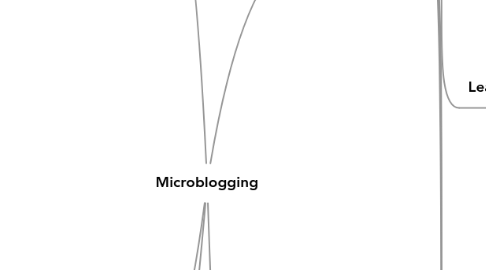
1. costs (Total Cost of Ownership)
1.1. direct costs
1.1.1. hard- and software
1.1.1.1. server
1.1.1.2. license
1.1.1.3. network
1.1.1.4. updates
1.1.2. cost for installation and implementation
1.1.2.1. duration
1.1.2.2. #man days
1.1.2.3. hourly wage rate
1.1.3. administration and maintenance
1.1.3.1. #man days
1.1.3.2. hourly wage rate
1.1.3.3. Help Desk Service
1.1.3.4. IT planning
1.1.3.5. process management
1.1.4. startup costs
1.1.4.1. IT employees which create and hold trainings
1.1.4.2. opportunity costs of the employees, which get trained
1.2. indirect costs
1.2.1. costs of usage
1.2.1.1. period of vocational adjustment
1.2.1.2. costs for switching and using different tools
1.2.1.3. #posts
1.2.1.4. duration for post creation
1.2.1.5. self service for the employees
1.2.1.6. adjustment of the user interface
1.2.2. down time
1.2.2.1. duration
1.2.2.2. frequency
1.2.2.3. costs of non usage
1.2.2.4. recovery costs
2. success factors
2.1. individual
2.1.1. employee acceptance
2.1.2. controlling and regulation
2.1.3. demography
2.1.4. expenditure of time
2.1.5. usage patterns
2.1.6. specific communication behavior
2.1.7. verification of knowledge
2.1.8. leadership
2.2. organization
2.2.1. structure/processes
2.2.2. multilingual information availability
2.2.3. relevance of information
2.2.4. company image
2.2.5. #user
2.2.6. management style
2.2.7. definition of goals
2.2.8. policies
2.2.9. administration/moderation
2.3. technology
2.3.1. heterogeneity of communication medium
2.3.2. Usability
2.3.3. Availability
2.4. legal aspects
2.4.1. data privacy
2.4.2. data protection
2.4.3. telecommunication data retention
2.4.4. intellectual property protection
3. common thoughts about measurement
3.1. predefine goals and measure them in 6-12-24 months
3.2. SNA should be proceeded directly after implementation and latest after 12 months again
3.3. the measurement and planning of RoI is also rising costs
4. Applications
4.1. Project Management
4.1.1. acceleration
4.1.1.1. processes
4.1.1.1.1. processing times (before/after)
4.1.1.1.2. number of needed employees (before/after)
4.1.1.1.3. efficiency (subjective)
4.1.1.2. decisions
4.1.1.2.1. duration of feedback (before/after)
4.1.1.2.2. traceability (subjective)
4.1.1.3. way of working
4.1.1.3.1. reduction of Mail (subjective)
4.1.1.3.2. time gain by improved search, collaboration (before/after)
4.1.2. transparency
4.1.2.1. documentation
4.1.2.1.1. accelerated (subjective)
4.1.2.1.2. reduced expenditure (before/after)
4.1.2.2. status reports
4.1.2.2.1. frequency (before/after)
4.1.2.2.2. build time (before/after)
4.1.2.3. tasks
4.1.2.3.1. clarity, conciseness (subjective)
4.1.2.3.2. lowering of goal conflicts (subjective)
4.1.3. networking
4.1.3.1. integration of mobile employees and satisfaction (subjective)
4.1.3.2. locating of experts (improved/declined)
4.1.3.3. team building (improved/declined)
4.1.3.4. Support of cross-linking (improved/declined)
4.1.4. cost cutting
4.1.4.1. meetings
4.1.4.1.1. #meetings (before/after)
4.1.4.1.2. duration of meetings (before/after)
4.1.4.2. lesser additional requirements
4.1.4.2.1. #failure (before/after)
4.1.4.2.2. recognition of failures (before/after)
4.1.4.2.3. duration of failure processing (before/after)
4.1.4.3. lower travel expenditures
4.1.4.3.1. costs (before/after)
4.1.4.3.2. calculating CO2 footprint
4.1.4.3.3. development of company car fleet (before/after)
4.2. Sales
4.2.1. increased sales
4.2.1.1. #contracts (before/after)
4.2.1.2. quality of contracts (big/small, long/short term contracts)
4.2.2. customer
4.2.2.1. #complaints (before/after)
4.2.2.2. latency of customer complaints (before/after)
4.2.2.3. customer satisfaction (before/after)
4.2.2.4. increased customer loyality
4.2.2.4.1. #follow orders (before/after)
4.2.2.4.2. #positive feedback (before/after)
4.2.2.5. #customers (before/after)
4.3. Ideas and Innovation Management
4.3.1. more ideas
4.3.1.1. #ideas (before/after)
4.3.1.2. #ideas per employee
4.3.2. quality of ideas
4.3.2.1. improved quality (subjective)
4.3.2.2. #minimal improvements (before/after)
4.3.2.3. #mid improvements (before/after)
4.3.2.4. #big improvements (before/after)
4.3.2.5. type of idea (process, product/service, strategy, customer, leadership....)
4.3.3. fast implementation
4.3.3.1. when was the idea communicated
4.3.3.2. when declined, aproved, or even recognized
4.3.3.3. When brought into the idea management
4.3.4. penetration of the whole organization with Idea management
4.3.4.1. discussion of ideas in the whole company or project group (subjective)
4.3.5. identification of creative employees
4.3.5.1. Where did the idea arise
4.3.5.2. Who created the idea
4.3.5.3. simplification (subjective)
4.4. Leadership
4.4.1. human capital
4.4.1.1. knowledge improvement/training
4.4.1.1.1. reduction of trainings through organizational learning processes(subjective)
4.4.1.1.2. awareness of information (subjective)
4.4.1.2. employee
4.4.1.2.1. motivation (before/after)
4.4.1.2.2. reduction of days absent (before/after)
4.4.1.2.3. satisfaction (before/after)
4.4.1.3. fluctuation of employees
4.4.2. creation of an open company communication
4.4.2.1. how long does it take to inform employees about actual topics
4.4.2.1.1. urgent (subjective)
4.4.2.1.2. medium (subjective)
4.4.2.1.3. strategic (subjective)
4.4.2.2. regularity of communication (subjective)
4.4.2.2.1. often
4.4.2.2.2. low
4.4.2.2.3. seldom
4.4.2.3. is the staff fully informed?
4.4.2.3.1. fragmentary
4.4.2.3.2. only the necessary
4.4.2.3.3. fully
4.4.2.3.4. detailed
4.4.3. Increasing awareness
4.4.3.1. informal awareness (information about actions and activities of others)
4.4.3.2. social awareness (information about the emotion and characteristics of colleagues)
4.4.3.3. group structure awareness (information about tasks and responsibilities)
4.4.3.4. workspace awareness (information about interaction processes with the own workspace and included artifacts)
4.4.4. cooperative/democratic leadership
4.5. System Management
4.5.1. cost cutting
4.5.1.1. employees (before/after)
4.5.1.2. systems (before/after)
4.5.1.3. increased efficiency of old systems
4.5.2. improved failure management
4.5.2.1. #failures (before/after)
4.5.2.2. duration of processing (before/after)
4.5.2.3. "Seize" of the failure Größe des Fehlers (fully blocked system - cosmetic issues)
4.5.2.4. reaction times (SLAs) (before/after)
4.5.3. knowledge transfer
4.5.3.1. documented failures
4.5.3.2. knowledge of employees about failures (before/after)
4.5.3.3. proposed failure solutions outside the IT (subjective)
4.6. General
4.6.1. reduced Mails
4.6.1.1. mails (before/after)
4.6.1.2. necessary storage capacity (before/after)
4.6.1.3. time taken to write (before/after)
4.6.1.4. systems (before/after)
4.6.1.5. hours of support (before/after)
4.6.2. lesser paper consumption
4.6.2.1. collective edited documents (subjective)
4.6.2.2. easier spread without printing (subjective)
4.6.3. cost cutting
4.6.3.1. software license (mail, CMS-System...)
4.6.3.2. storage/memory costs
4.6.3.3. working processes
4.7. Information and Knowledge Management
4.7.1. Enterprise Search
4.7.1.1. improved search for personal information
4.7.1.2. search for experts/groups and specialized communities
4.7.1.3. search for information and excerpts of information
4.7.2. information
4.7.2.1. spread of external information
4.7.2.2. spread of internal information
4.7.2.3. management of collective used documents and versioning
4.7.2.4. categorization of information
4.7.2.5. recording of information
4.7.3. knowledge transfer
4.7.3.1. spread duration of new Information (before/after)
4.7.3.2. duration of incorporation (before/after)
4.7.3.3. improved mentoring of employees (subjective)
4.7.3.4. improved spread of knowledge (subjective)
4.7.3.5. improved communication (subjective)
4.7.3.6. improved collaboration (subjective)
4.7.4. knowledge
4.7.4.1. improved training
4.7.4.2. lessons learned
4.7.4.3. best practices
